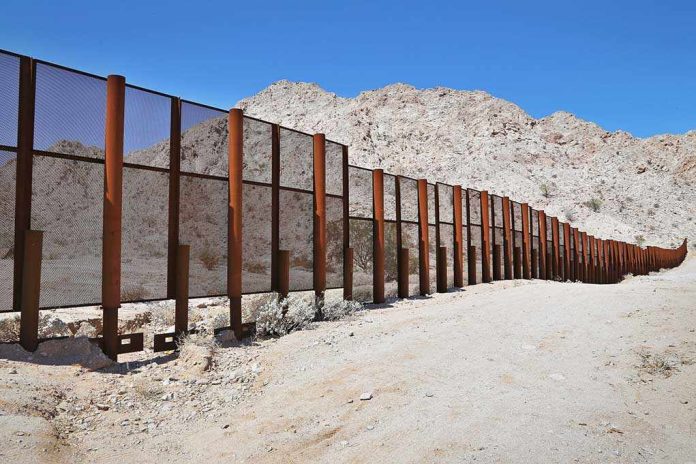
A new border wall project in San Diego ignites debates over security versus environmental impact.
Story Overview
- The Trump administration plans to build 10 miles of new border wall near San Diego.
- Environmental laws were waived to expedite construction, raising concerns.
- The project is part of a $46.5 billion initiative through 2029.
- Supporters argue it’s necessary for national security; critics cite ecological risks.
Trump’s Border Wall Initiative Gains Momentum
The Trump administration has announced an ambitious plan to construct 10 miles of new border wall near the San Diego ports of entry. This move comes as part of a broader effort to fulfill campaign promises to secure the southern border, a cornerstone of Trump’s political platform since 2015. The Department of Homeland Security (DHS), led by Secretary Kristi Noem, has issued waivers on multiple environmental laws to fast-track construction, citing high rates of illegal entry and drug smuggling as justification. The project is funded by the “One Big Beautiful Bill Act,” which allocates $46.5 billion for border infrastructure through fiscal 2029.
The decision to waive over 25 federal laws, including the Endangered Species Act and Clean Water Act, has sparked significant debate. Proponents argue that immediate action is necessary to achieve operational control of the border and reduce illegal crossings, while critics raise alarms about the ecological impact and potential legal challenges. Despite the controversy, the Trump administration is pressing forward, emphasizing national security and the need to protect American communities.
Strategic Importance of the San Diego Sector
San Diego has long been a focal point for border security efforts due to its proximity to major ports of entry and urban centers. Historically, this sector has experienced high levels of illegal crossings and smuggling activity. However, recent enforcement actions by Mexican authorities and U.S. policy changes have led to a sharp decline in migrant encounters, with a 95% drop reported over the past year. This strategic importance has driven repeated upgrades to border infrastructure in the region, including previous projects that closed gaps and replaced deteriorated fencing.
The current construction plans include 7.6 miles of 30-foot-tall barriers near Tecate, 1.3 miles east of Tecate, and 0.84 miles of secondary barrier near Otay Mesa. Additionally, the initiative aims to upgrade over 50 miles of existing infrastructure, ensuring a more robust and secure border. These efforts highlight the administration’s commitment to enhancing border security and fulfilling the mandate given by the American people.
Implications and Reactions
The decision to expedite border wall construction has prompted mixed reactions from various stakeholders. Supporters view it as a necessary step to safeguard national security and curb illegal immigration, aligning with conservative values of limited government and individual liberty. On the other hand, environmental and humanitarian groups have expressed concerns over the potential disruption to local ecosystems and communities, raising questions about the long-term implications of such actions.
Looking ahead, the construction of the new border wall is expected to continue shaping the landscape and dynamics of the U.S.-Mexico border. While the Trump administration remains focused on delivering on its promises, the debate over balancing security and environmental stewardship is likely to persist, reflecting the broader tensions and challenges in American border policy.
Sources:
Immigration Policy Tracking Project
U.S. Customs and Border Protection (CBP) National Media Release







